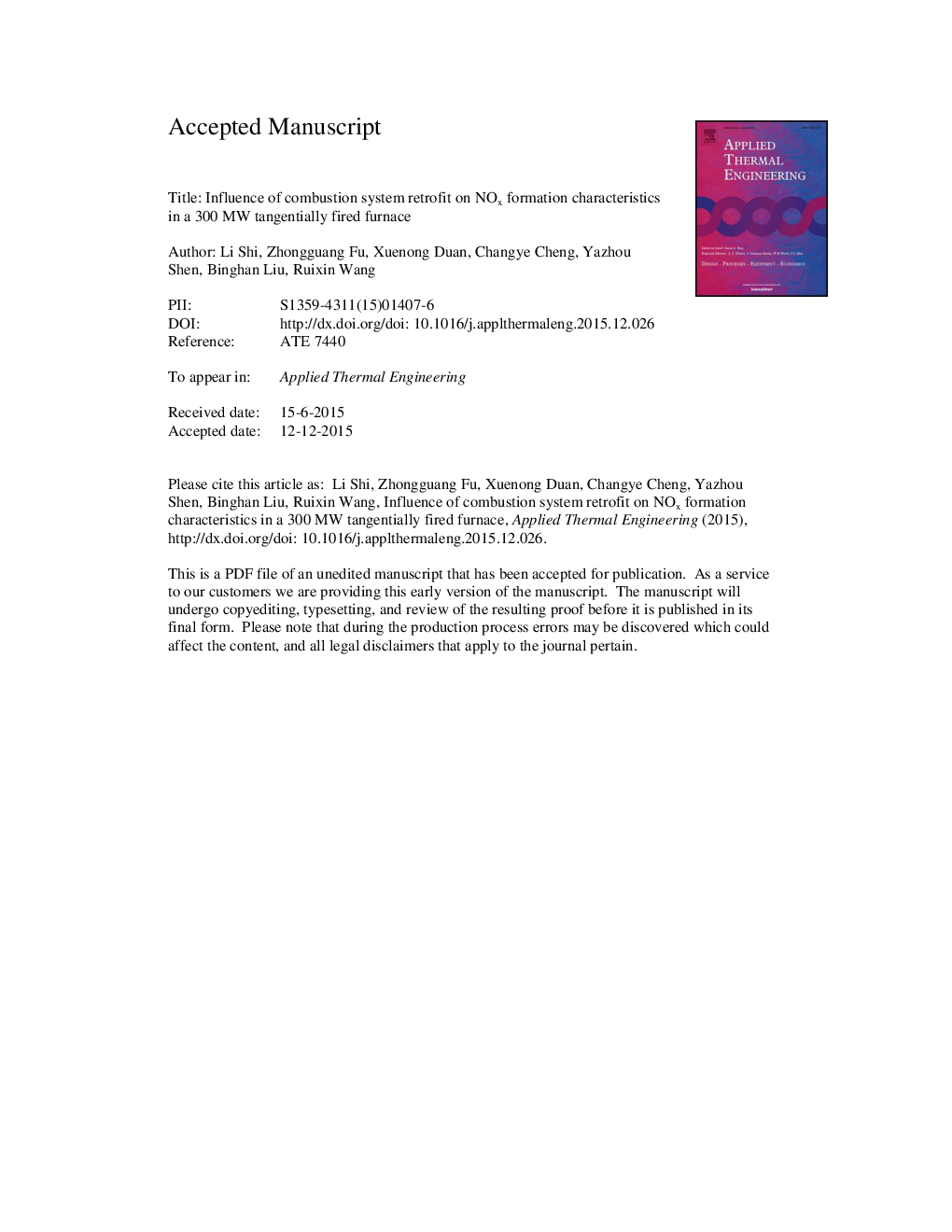| Article ID | Journal | Published Year | Pages | File Type |
|---|---|---|---|---|
| 7048629 | Applied Thermal Engineering | 2016 | 24 Pages |
Abstract
The NOx emission in a 300âMW retrofitted tangentially fired pulverized coal (PC) boiler is numerically studied using fluid dynamic code. Good agreement between design/measured values and predicted results implies the accuracy of analysis in the current study. The results showed that the retrofit of combustion system not only changes the total NOx emission concentration of boiler exit, but also the scale of NOx formation region in furnace. In conventional burner, peak temperature of flue gas is very close to burner, and thus greatly enhances NOx formation process. In fuel rich stream of the low-NOx burner, the optimum concentration of particle coal can not only reduce peak temperature in the vicinity of burner, but also produce more intermediate species to enhance NOx conversion process. Although the conversion rates of HCN slightly increases in the fuel lean stream of low-NOx burner due to relatively higher oxygen mass fraction in this stream, the peak value of fuel NOx formation rate curve is still lower than that of conventional burner. Operation of separated over fire air could effectively reduce both the rate and region of total NOx formation in furnace. However, combustion systems retrofit slightly decreases economic performance of boiler and extends the ignition length of pulverized coal. Therefore, optimal design of combustion system is still necessary for better economic performance and stabilized combustion characteristic of the boiler. The present study provides guidance for optimization design of low-NOx combustion system, combustion adjustment and safe operation of the boiler.
Keywords
Related Topics
Physical Sciences and Engineering
Chemical Engineering
Fluid Flow and Transfer Processes
Authors
Li Shi, Zhongguang Fu, Xuenong Duan, Changye Cheng, Yazhou Shen, Binghan Liu, Ruixin Wang,
